Understanding Trans Lives: A Deep Dive for Transgender Awareness Week
Transgender Awareness Week is an important time for reflection, recognition, and advocacy within the transgender community and among allies. This week is not only about celebrating the accomplishments of transgender individuals but also to amplify their voices and highlight the unique challenges they face.
Understanding Transgender Identity
Being transgender refers to individuals whose gender identity differs from the sex they were assigned at birth. This identity exists independently of biological sex and often comes with a desire to transition to the gender that aligns with their true selves, the gender they identify with. Transgender people may identify as female, male, nonbinary, gender non-conforming, or embrace other gender identities that differ from the traditional binary framework. It’s essential to recognize that being transgender is about authenticity and self-recognition, reflecting a diverse spectrum of experiences and expressions within the entire human experience. Understanding and respecting these identities is important when it comes to fostering acceptance, affirmation, and inclusivity in our communities.
The Origins of Transgender Awareness Week
Transgender Awareness Week is an annual event that began in 2017 with the aim of highlighting the challenges faced by transgender individuals. Established to celebrate the achievements, talents, and contributions of transgender people globally, the week serves as a platform for advocacy and education. It takes place in November, strategically coinciding with Transgender Day of Remembrance, which honors the lives lost to transphobia and violence. This alignment underscores the dual purpose of the week: to recognize the resilience of the transgender community while also acknowledging the urgent need for social change and justice. Through awareness and activism, Transgender Awareness Week continues to foster greater understanding of gender diversity.
Recognizing Accomplishments
Throughout history, transgender individuals have made significant contributions to society in various fields, including art, science, politics, and activism. Transgender Awareness Week provides an opportunity to shine a light on these achievements, honoring those who have paved the way for greater acceptance and understanding. By sharing stories of success, we inspire others and demonstrate the resilience and strength of the transgender community.
Promoting Visibility
Visibility is a powerful tool in combating prejudice and discrimination. Transgender Awareness Week encourages everyone—transgender individuals and allies alike—to engage in conversations about gender identity and expression. Increased visibility helps normalize transgender experiences and fosters a sense of belonging. When people see diverse representations of gender in media, workplaces, and communities, it helps to challenge stereotypes and misconceptions.
Educating on Rights Issues
Education is at the heart of Transgender Awareness Week. Many people still lack a clear understanding of transgender rights and the specific issues faced by this community. From healthcare access and legal recognition to workplace discrimination and violence, the challenges are significant. By providing information and resources, we can empower individuals to advocate for change and support transgender rights.
Taking Action
As we observe Transgender Awareness Week, let us commit to being allies in this journey. Whether it’s attending events, engaging in educational activities, or simply listening to and uplifting transgender voices, every action counts. We can work to create a more inclusive world where everyone, regardless of their gender identity, can thrive.
What is Transgender Day of Remembrance?
Transgender Day of Remembrance (TDOR) is a poignant observance established in 1999 by transgender advocate Gwendolyn Ann Smith. It began as a vigil to honor Rita Hester, a transgender woman tragically murdered in 1998. This vigil aimed to commemorate not only Rita but also all transgender individuals who have lost their lives to violence, highlighting the systemic issues and prejudice faced by the transgender community. Over the years, TDOR has evolved into a powerful annual event that fosters remembrance, awareness, and advocacy, bringing people together to honor the lives taken and to reinforce the need for continued action against anti-transgender violence and discrimination. Each year, communities across the globe gather to reflect, mourn, and commit to creating a safer, more inclusive world for all.
“Transgender Day of Remembrance seeks to highlight the losses we face due to anti-transgender bigotry and violence. I am no stranger to the need to fight for our rights, and the right to simply exist is first and foremost. With so many seeking to erase transgender people — sometimes in the most brutal ways possible — it is vitally important that those we lose are remembered, and that we continue to fight for justice.”
– Gwendolyn Ann Smith (Transgender Day of Remembrance founder)
Transgender Day of Remembrance 2024
Listed below are the names of the 28 transgender individuals (that we know of) who have been tragically killed in the US in 2024 (as of 10/25/24). Click on each name to learn more about each of their lives and the circumstances of their deaths. We must continue to say their names and share their stories to ensure they are never forgotten. We must also advocate for change to help prevent these acts of violence from happening in the future.
(Content Warning: These articles contain discussions of violence against and details surrounding the deaths of transgender individuals.)
Kitty Monroe(43)-Sasha Williams(36)-África Parrilla García(25)-Righteous Torrence “TK” Hill(35)-Reyna Hernandez(54)-Diamond Brigman(36)- Alex “Boo” Taylor Franco(21)-Meraxes Medina(24)-Yella Clark(45)-River Nevaeh Goddard(17)-Tee “Lagend Billions” Arnold(36)-Starr Brown-Andrea Doria Dos Passos(37)-Kita Bee(46)-Jazlynn Johnson(18)-Tayy Dior Thomas(17)- Michelle Henry(25)-Liara Kaylee Tsai(35)-Pauly Likens(14)-Kenji Spurgeon(23)-Shannon Boswell(30)-Monique Brooks(49)-Dylan Gurley(20)-Tai’Von Lathan(24)- Kassim Omar(29)-Redd(25)-Honee Daniels(37)-Nex Benedict(16)
Resources
How to be an Ally to Transgender and Nonbinary Youth
